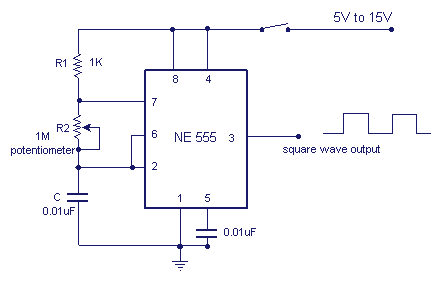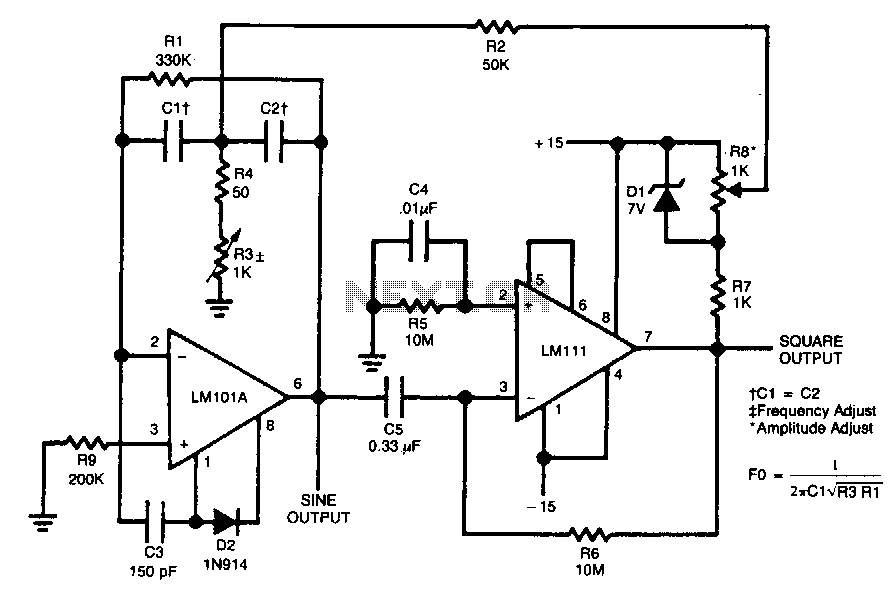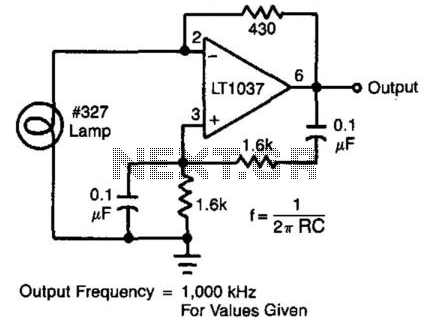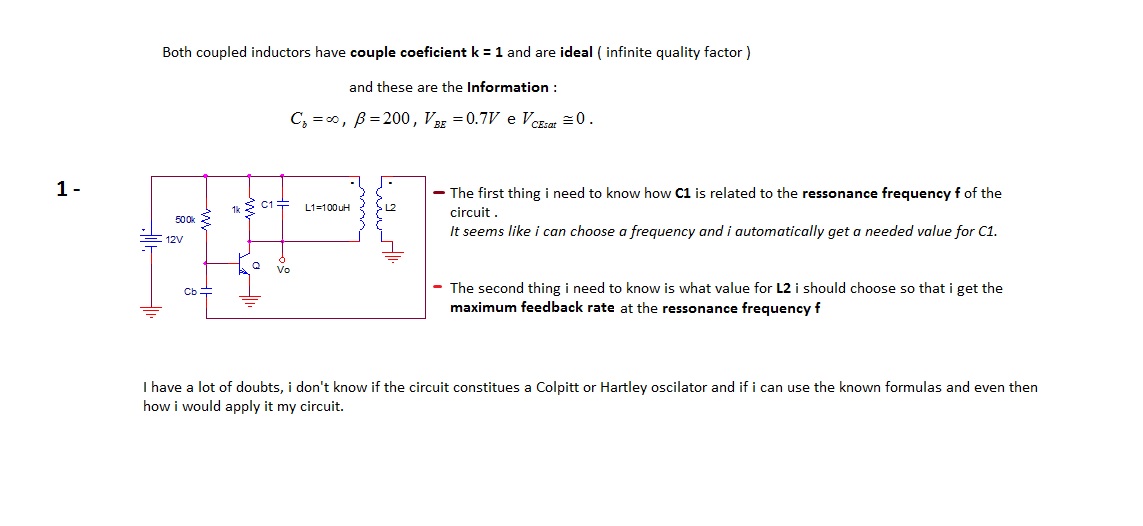
Voltage-Tuned Vhf Oscillator
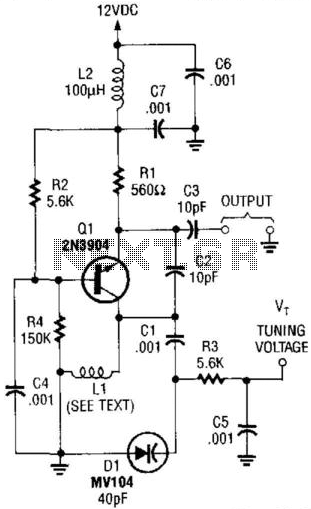
This VHF VCO circuit operates within the frequency range of 30 to 200 MHz. Q1 may be substituted with a 2N3563 for frequencies exceeding 100 MHz. The inductor, L1, is selected to resonate at the desired frequency in conjunction with a varactor capacitance of 40 pF. Alternative varactors can be used, or two varactors can be connected back-to-back to improve linearity, depending on the specific application.
This VHF Voltage-Controlled Oscillator (VCO) circuit is designed to generate frequencies in the Very High Frequency (VHF) range, specifically from 30 MHz to 200 MHz. The core component, Q1, is a transistor that can be replaced with a 2N3563 for applications requiring operation above 100 MHz. This substitution allows for enhanced performance at higher frequencies, ensuring the circuit maintains stability and efficiency.
The inductor, L1, is a critical element in the circuit, as it is tuned to resonate with the varactor diode's capacitance. In this design, a varactor with a capacitance of 40 pF is employed, which allows for fine-tuning of the output frequency. The choice of the varactor is essential, as it directly influences the frequency modulation capabilities of the VCO. For applications demanding higher linearity in frequency response, the circuit can accommodate alternative varactor models or utilize two varactors arranged in a back-to-back configuration. This arrangement can significantly enhance the linearity of the tuning curve, making the VCO more suitable for precision applications.
To implement this VCO effectively, careful consideration must be given to the selection of passive components, including the inductor and the varactor, to ensure optimal performance across the desired frequency range. Additionally, layout considerations such as minimizing parasitic capacitance and inductance are vital for maintaining signal integrity and reducing unwanted oscillations. Overall, this VHF VCO circuit presents a versatile solution for various RF applications, including communication systems, signal generation, and frequency synthesis. This VHF VCO circuit is suitable for 30 to 200 MHz. Q1 can be replaced by a 2N3563 for operation above 100 MHz . LI is chosen to resonate to the desired frequency with the varactor capacitance of 40 pF. Other varactors can be substituted or two back-to-back varactors can be used for better linearity, depending on the application.
This VHF Voltage-Controlled Oscillator (VCO) circuit is designed to generate frequencies in the Very High Frequency (VHF) range, specifically from 30 MHz to 200 MHz. The core component, Q1, is a transistor that can be replaced with a 2N3563 for applications requiring operation above 100 MHz. This substitution allows for enhanced performance at higher frequencies, ensuring the circuit maintains stability and efficiency.
The inductor, L1, is a critical element in the circuit, as it is tuned to resonate with the varactor diode's capacitance. In this design, a varactor with a capacitance of 40 pF is employed, which allows for fine-tuning of the output frequency. The choice of the varactor is essential, as it directly influences the frequency modulation capabilities of the VCO. For applications demanding higher linearity in frequency response, the circuit can accommodate alternative varactor models or utilize two varactors arranged in a back-to-back configuration. This arrangement can significantly enhance the linearity of the tuning curve, making the VCO more suitable for precision applications.
To implement this VCO effectively, careful consideration must be given to the selection of passive components, including the inductor and the varactor, to ensure optimal performance across the desired frequency range. Additionally, layout considerations such as minimizing parasitic capacitance and inductance are vital for maintaining signal integrity and reducing unwanted oscillations. Overall, this VHF VCO circuit presents a versatile solution for various RF applications, including communication systems, signal generation, and frequency synthesis. This VHF VCO circuit is suitable for 30 to 200 MHz. Q1 can be replaced by a 2N3563 for operation above 100 MHz . LI is chosen to resonate to the desired frequency with the varactor capacitance of 40 pF. Other varactors can be substituted or two back-to-back varactors can be used for better linearity, depending on the application.
